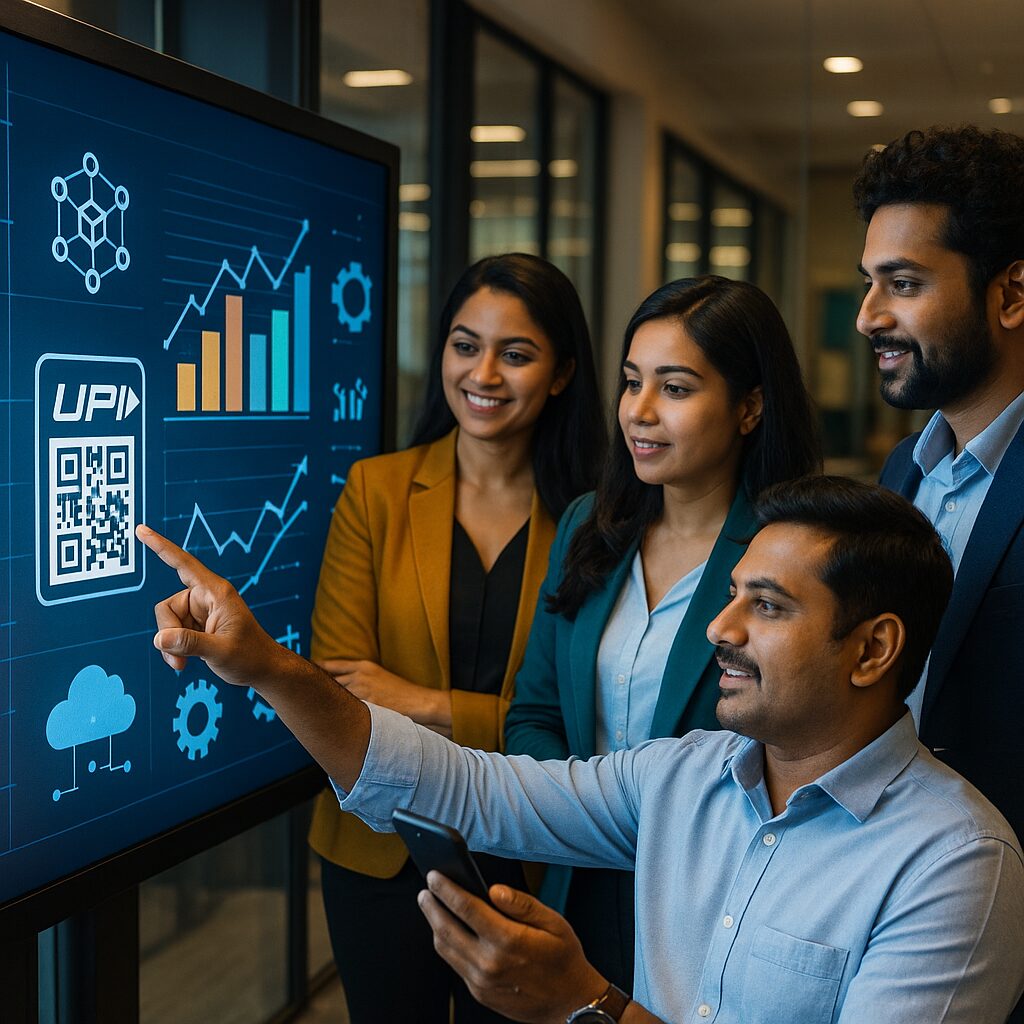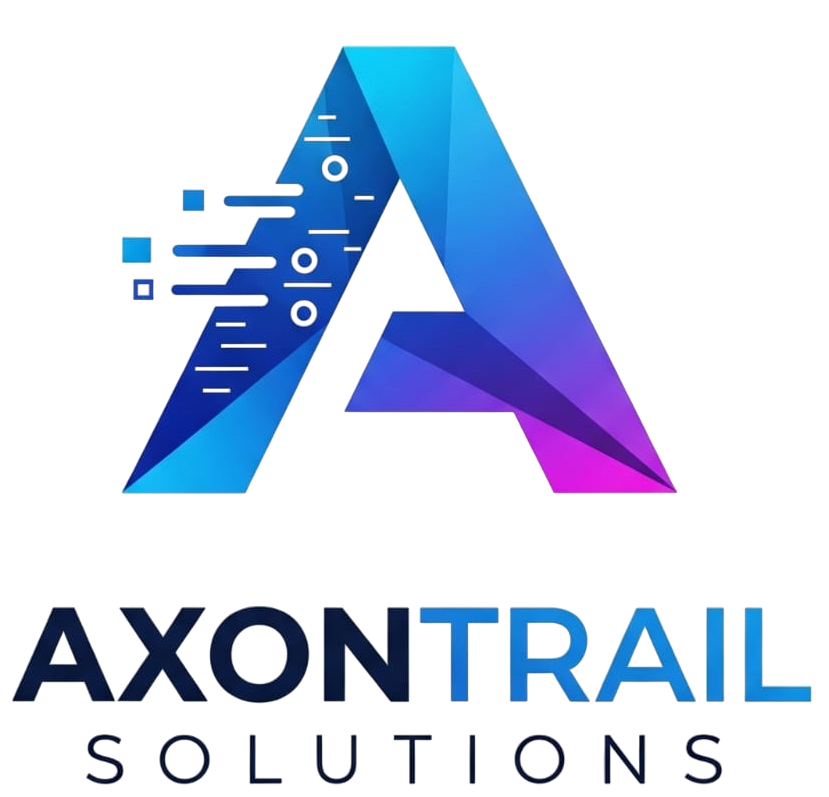
- July 7, 2025
- AxonTrail Editorial Team
- 0
Table of Contents
ToggleWhy Indian MSMEs Must Embrace Digital Transformation in 2025 to Survive and Grow
1. Introduction
In 2025, digital transformation isn’t just a buzzword—it’s a lifeline for India’s Micro, Small, and Medium Enterprises (MSMEs). With global markets shifting at the speed of algorithms and customer expectations evolving by the minute, MSMEs that cling to legacy methods risk obsolescence. This article unpacks why digital transformation is essential for survival and growth, how businesses can get started, and why AxonTrail.com is the ideal partner for this journey.
2. Who Are India’s MSMEs?
India’s MSMEs are classified by investment and turnover:
Micro enterprises: investment up to ₹1 crore, turnover up to ₹5 crore
Small enterprises: investment up to ₹10 crore, turnover up to ₹50 crore
Medium enterprises: investment up to ₹50 crore, turnover up to ₹250 crore
They span manufacturing, services, and trade—everything from neighbourhood textile units to niche IT consultancies. Collectively, they contribute over 30 percent of India’s GDP, 45 percent of exports, and employ more than 120 million people. Yet many still rely on spreadsheets and manual workflows—an Achilles’ heel in today’s digital era.
3. What Is Digital Transformation?
Digital transformation means reimagining your core business processes through technology. For MSMEs, it encompasses:
Cloud-based ERP and CRM to automate finance, inventory, and customer interactions
Digital payment acceptance (UPI, wallets, cards) and e-invoicing integration
Data analytics and AI for demand forecasting and risk management
Social commerce and e-marketplace channels to reach new customers
Blockchain or IoT for supply-chain traceability and compliance
This holistic approach elevates efficiency, transparency, and customer trust—all crucial in a crowded marketplace.
4. Why Digital Transformation Is Non-Negotiable in 2025
4.1 Drive Operational Efficiency
Manual processes create errors and delays. Cloud ERP systems automate purchase orders, invoicing, and payroll—cutting processing time by up to 60 percent and virtually eliminating data-entry mistakes.
4.2 Expand Market Reach
With over 650 million Indians online, digital storefronts and social commerce unlock customers in tier-2 cities and global markets. Personalized chatbots and email automations keep buyers engaged 24/7.
4.3 Accelerate Access to Finance
Lenders increasingly rely on real-time financial dashboards. MSMEs with digital transformation in their DNA secure loans 30 percent faster and often at lower interest rates than peers with paper records.
4.4 Build Supply-Chain Resilience
IoT sensors and blockchain traceability give real-time visibility into inventory and shipments. When disruptions strike—whether floods or port strikes—digitally transformed MSMEs reroute supplies within hours.
4.5 Empower Data-Driven Decisions
Predictive analytics alert you to seasonal demand spikes, supplier risks, and cash-flow crunches before they become crises. Dashboards track key performance indicators (KPIs) in real time, enabling agile pivots.
5. How MSMEs Can Start Their Digital Transformation
5.1 Establish a Mobile-First Online Presence
Build a responsive website optimized for local search keywords like “digital transformation for MSMEs” and “MSME digitization 2025.”
List products on major marketplaces (Amazon, Flipkart), then integrate orders into a unified dashboard.
5.2 Adopt Seamless Digital Payments
Enable UPI, wallets, credit cards, and e-invoicing by connecting to GSTN APIs.
Automate invoice generation, tax filing, and reconciliation to eliminate compliance headaches.
5.3 Automate Back-Office with ERP & CRM
Choose a modular cloud ERP to kick off with finance and inventory, then add HR, manufacturing, and analytics modules.
Pair it with a lightweight CRM for lead management, email campaigns, and after-sales support.
5.4 Leverage Data & AI
Integrate AI-driven demand forecasting to optimize purchase volumes and pricing.
Use machine-learning models for credit-risk scoring and inventory-turn analysis, reducing write-offs and stock-outs.
5.5 Upskill Your Team
Partner with digital-literacy programs (Coursera, Udemy, local ITI centres).
Create in-house champions who train peers on new tools and best practices.
Reward staff for digital certifications to foster a culture of continuous learning.
6. Overcoming Barriers to Digital Adoption
6.1 Managing Costs
Start small with pay-as-you-go SaaS plans. Leverage government subsidies under the Digital MSME Scheme. Scale modules only as ROI is proven.
6.2 Bridging the Digital Literacy Gap
Run on-the-job workshops and peer-learning cohorts. Use bite-sized video tutorials and job aids in local languages to accelerate adoption.
6.3 Ensuring Cybersecurity
Implement two-factor authentication, regular backups, and basic firewalls. Choose vendors certified under ISO 27001 and compliant with GDPR for peace of mind.
7. Government & Industry Initiatives
Digital India: Expanding broadband and Common Service Centres (CSCs) for rural access
Udyam Registration: Simplified online MSME registration for scheme eligibility and credit
PM GatiShakti: Integrated logistics planning to smooth goods movement
Technology Centres: R&D hubs offering process-innovation support
These programs reduce friction, subsidize technology adoption, and create a digital ecosystem that MSMEs can plug into.
8. AxonTrail.com: Your Digital Transformation Partner
AxonTrail.com is built for Indian MSMEs seeking rapid, cost-effective digital transformation. Key offerings:
End-to-End Traceability: Blockchain-secured batch tracking from raw material to delivery
Compliance Automation: GST returns, e-invoicing, and labour-law filings with zero manual effort
Real-Time Collaboration: Shared dashboards for suppliers, distributors, and logistics partners
AI Insights: Demand forecasting, cash-flow projections, and credit-risk scoring in one click
Plug-and-Play Integrations: Connect to popular ERPs, CRMs, payment gateways, and e-commerce marketplaces in minutes
Partnering with AxonTrail.com can reduce costs by up to 25 percent, accelerate order-to-cash cycles by 40 percent, and unlock new markets across India and beyond.
9. A Roadmap to Digital Success
| Phase | Actions | Timeline |
|---|---|---|
| Assess | Audit processes, map digital gaps | Month 1 |
| Pilot | Deploy core ERP/CRM in one business unit | Months 2–3 |
| Train | Conduct workshops, appoint champions | Months 3–4 |
| Scale | Roll out across all units, integrate | Months 5–8 |
| Optimize | Monitor KPIs, implement AI forecasts | Ongoing |
Regularly revisit your strategy—metrics evolve, technology matures, and customer expectations shift.
10. Conclusion
Digital transformation is no longer optional—it’s the cornerstone of resilience and growth for Indian MSMEs in 2025. By digitizing processes, embracing data-driven decision making, and partnering with AxonTrail.com, you’ll unlock efficiency, expand your market reach, and build a future-ready enterprise. Start your transformation today and secure your place in tomorrow’s economy.
11. Frequently Asked Questions
What is digital transformation for MSMEs?
Digital transformation for MSMEs means adopting cloud ERP/CRM, digital payments, data analytics, and e-commerce to automate and optimize end-to-end business processes.Why is digital transformation crucial in 2025?
Rapid market shifts, evolving customer expectations, and tighter regulatory landscapes demand agility and data-driven decisions—only achievable through digital transformation.How can a micro enterprise afford digitization?
Start with modular SaaS subscriptions, leverage government subsidies (Digital MSME Scheme), and scale features based on clear ROI metrics.Which technology should MSMEs implement first?
Begin with cloud-based ERP for finance/inventory and digital payment gateways (UPI, e-invoicing) to establish a solid digital foundation.How does AxonTrail.com simplify compliance?
AxonTrail.com automates GST returns, e-invoicing, and labour-law filings, while maintaining blockchain-backed audit trails for regulatory audits.Can digital transformation improve access to credit?
Yes—lenders use real-time financial dashboards and digital records to underwrite loans faster and at better rates.What are common challenges in digital adoption?
Cost constraints, digital literacy gaps, and cybersecurity concerns are typical but can be mitigated with phased rollouts, training, and basic security measures.Which government programs support MSME digitization?
Key initiatives include Digital India, Udyam Registration, PM GatiShakti, and industry-aligned Technology Centres.How do I measure ROI on digital transformation?
Track time saved on manual tasks, reduction in compliance penalties, improvements in cash-flow cycles, and revenue growth from new channels.What role does AI play in MSME operations?
AI enables demand forecasting, credit-risk scoring, inventory optimization, and real-time anomaly detection—driving proactive management.

